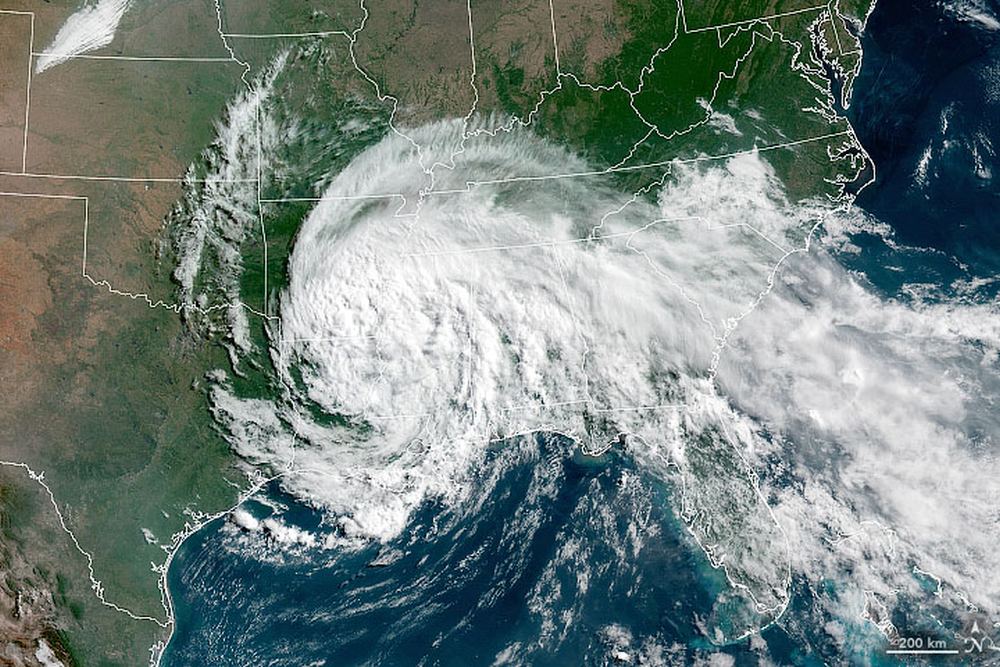Satellite engineers know what every photographer knows: get close to your subject to get better pictures. Not just visible light pictures, but all across the spectrum. The lower altitude also improves things like radar, lidar, communications, and gps.
But when your subject is Earth, and Earth is surrounded by an atmosphere, getting closer is a delicate dance with physics. The closer a satellite gets to Earth, the more atmospheric drag it encounters. And that can mean an unscheduled plummet to destruction for Earth-Observing (EO) satellites.
Getting satellites to orbit closer to Earth is a sort of Holy Grail in Earth observation. If you can get a satellite closer, you can reduce the payload and get the same results as a satellite in a higher orbit, thereby reducing costs. Or, you can keep a similar payload and get much better results.
The benefits of VLEO satellites are many. We use satellites to monitor hurricanes, forest fires, draughts, monsoons, and climate change. We use it to monitor agriculture, to monitor weapons development, offshore fishing fleets, and to track the onset of disease outbreaks. Satellites provide GPS coverage, internet coverage, and a host of other communications services. Getting satellites closer to Earth would benefit all of these endeavours, and more. A quick look at NASA’s Earth Observatory makes this clear.
For Earth-observing satellites, better results means higher-resolution images and data, better signal-to-noise ratios, and lower latency in communications. “Additional benefits include improved geospatial position accuracy,” the authors write in their paper, “improvements in communications link-budgets, and greater launch vehicle insertion capability.”
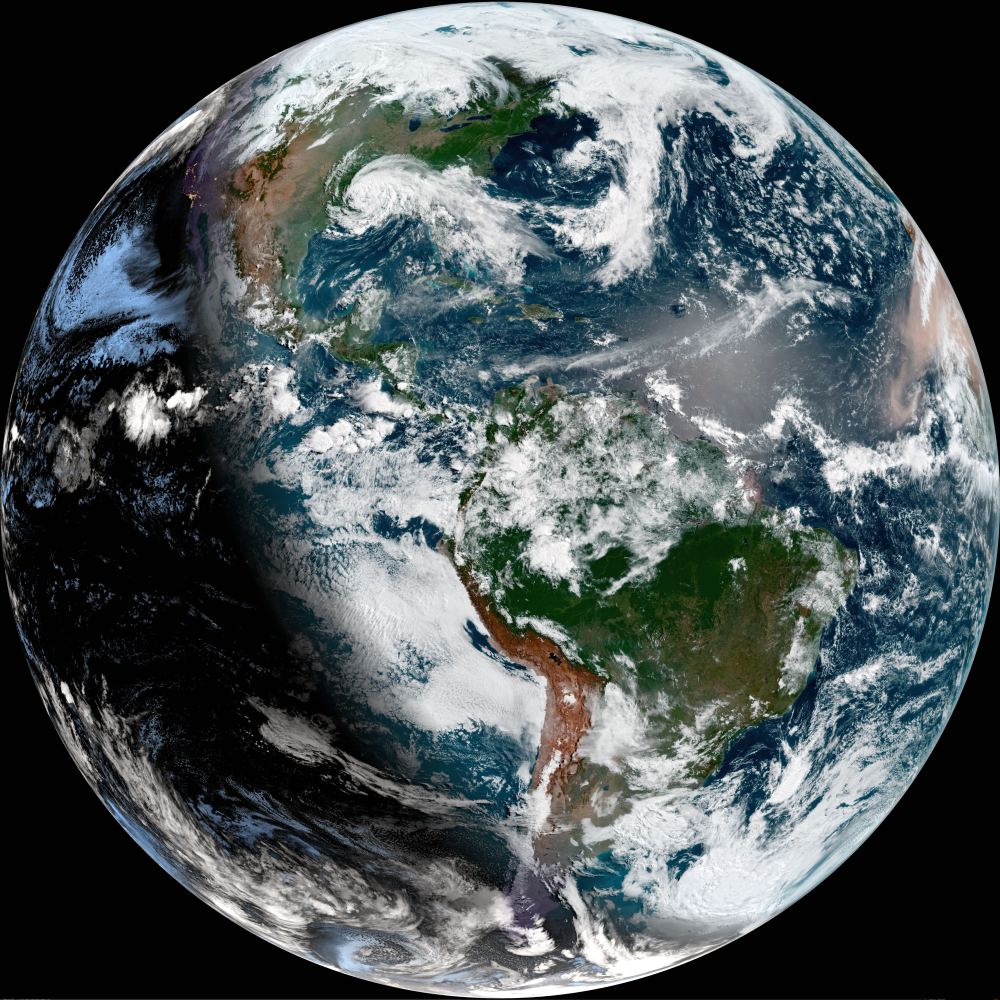
The barrier to all these improvements is the Earth’s atmosphere. The closer a satellite gets to Earth, the more dense the atmosphere is, creating more drag. Without a way to counter that drag, satellites too close to Earth could suffer orbital decay and plunge to destruction in the atmosphere in a matter of a few weeks. What’s to be done?
In a new paper, a team of researchers examine the issues surrounding Very Low Earth Observation, or VLEO. The paper is titled “The Benefits of Very Low Earth Orbit for Earth Observation Missions.” The lead author is Nicholas Crisp from the University of Manchester, and the paper will be published in the journal Progress in Aerospace Sciences.
Atmospheric drag and unwanted orbital decay might be the most prominent issue facing VLEO, but as the researchers point out in their paper, it’s just one of the obstacles.
VLEO orbits are usually defined as those below 450 km. The upper atmosphere at that altitude contains atomic oxygen. The atmospheric oxygen that we breathe is molecular oxygen (O2), meaning two oxygen atoms bound together. In the Earth’s upper atmosphere, the Sun’s ultraviolet light splits molecular oxygen into atomic oxygen. So atomic oxygen is unbound, meaning that it’s highly reactive. It’s just waiting to bond with something.

This eagerness to bond causes oxygen erosion, a hazard for satellites operating in VLEO. It was first discovered when Space Shuttles returned to Earth with damage to their thermal blankets. “In the first few shuttle flights, materials looked frosty because they were actually being eroded and textured,” says Bruce Banks, a senior physicist with Alphaport, supporting the Space Environment and Experiments branch at NASA’s Glenn Research Facility. “Atomic oxygen reacts with organic materials on spacecraft exteriors, gradually damaging them.”
To operate safely in VLEO, satellites have to be manufactured from materials that resist oxygen erosion. The ESA has been working on the problem, using their atomic oxygen generator at their Materials and Electrical Components Laboratory. The generator uses a laser to create atomic oxygen, and tests its effects on materials in a vacuum.
In general terms, metals are more resistant to atomic erosion than polymers, but polymers are lighter and provide better thermal insulation. Polymers are widely used in electronics and optics, partly because they’re so light. And while metals resist oxygen erosion better than polymers, they’re heavy.
Beta cloths are widely used in space applications, including spacesuits, because they resist oxygen erosion. The Space Shuttle bays were almost entirely covered in beta cloth because they were open in space for long periods of time. And NASA used a beta cloth to protect Curiosity’s nuclear power plant, too. As part of their VLEO effort, the ESA is investigating better beta cloths.
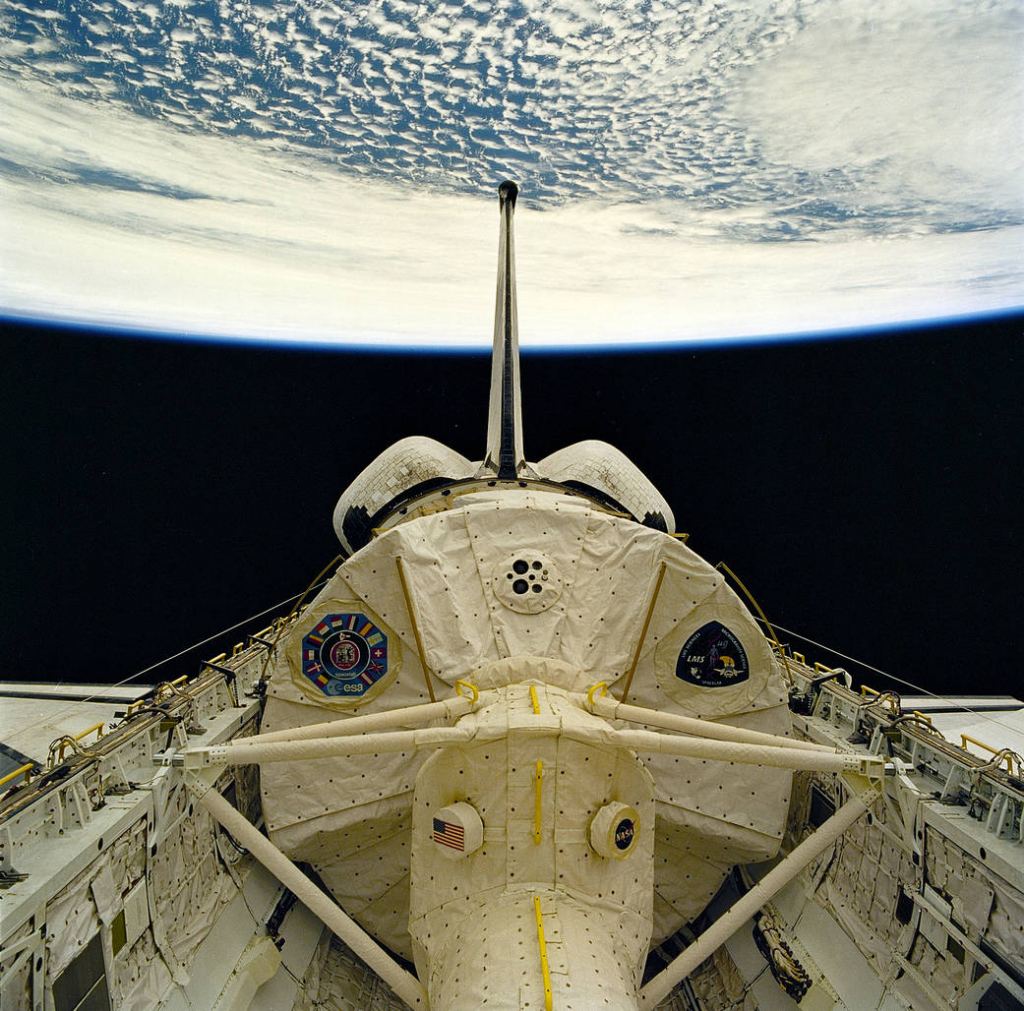
Another benefit to VLEO satellites is collision avoidance.
Space junk is a growing problem, especially in LEO. But in VLEO, there’s much less of it. In their paper, the authors write, “In addition to naturally occurring micrometeoroids, the objects which persist in orbit principally include post-mission and failed spacecraft, launch vehicle upper stages, deployment and other mission-related items, and surface degradation and
propulsion products amongst other miscellaneous objects.”
That space junk tends to persist longer in LEO, since orbital decay takes longer. So LEO is becoming a more and more hazardous place, and debris created there can outlast the mission it came from. Not only is there less debris in VLEO, but any debris that is there tends to decay more quickly, and be destroyed in the atmosphere. “However,” the authors write, “in VLEO the atmospheric density is higher and any debris which is
generated in or enters this regime from higher orbits will decay at a faster rate.”
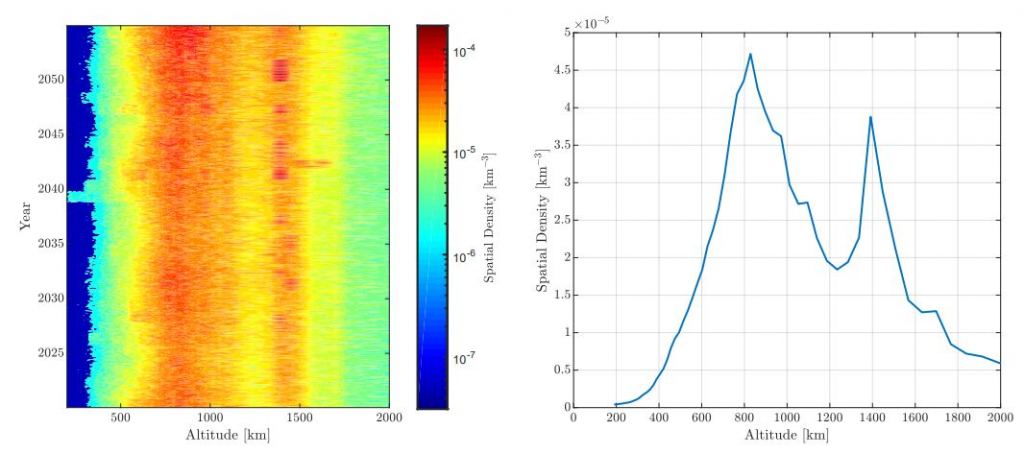
Radiation is also a problem in Earth orbit. “The radiation environment which a spacecraft is subjected to in LEO consists of a combination of energetic particles trapped by the Earths magnetic field, solar flares,
and galactic cosmic rays,” the researchers write. That radiation poses a hazard for sensitive electronic equipment on spacecraft. Here again, VLEO is a safer—and maybe more economical—environment for satellites than LEO.
“With increasing interest and use of commercial off-the-shelf components without radiation-hardening, a reduction in radiation exposure at lower altitudes may enable longer duration missions utilising these components
as the lifetime dosage reduces correspondingly,” they write. “Alternatively, even cheaper consumer components may be able to be successfully used in VLEO, further decreasing mission costs and system development time.”
The overarching issue with VLEO satellites is probably atmospheric drag. That’s what’s standing in the way of all the benefits of operating there. Without a way to overcome that drag, satellites will simply fall out of orbit too soon, and burn up on reentry. It’s possible that satellites could be designed somewhat aerodynamically, to use the increasingly dense atmosphere to create lift. This is an active research area.
But it might be the case that a propulsion system is needed to counteract the drag. There are solutions on the horizon for that, especially in the form of Atmosphere-Breathing Electric Propulsion (ABEP.)
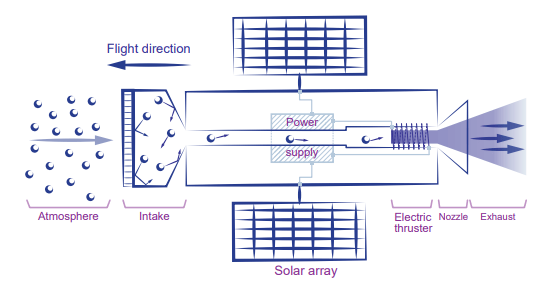
propulsion (ABEP) system. Image Credit: Crisp et al, 2020.
Though the atmosphere is very thin in VLEO, it’s still there. The oxygen in that environment can act as a propellant for ABEP systems. The problem is the low density.
The ESA is working on an Air-Breathing Electronic Thruster, an ion drive that uses the atmospheric oxygen as a source of ions, with a satellite’s electrical power system providing the electricity. By doing that, the system doesn’t need to carry any xenon propellant, instead harvesting the atomic oxygen in VLEO.
The problem, again, is the low density of that atomic oxygen. The ESA is developing a special intake for their thruster that would collect and compress the oxygen, making it viable as a propellant. The system has been tested successfully in simulated VLEO conditions.
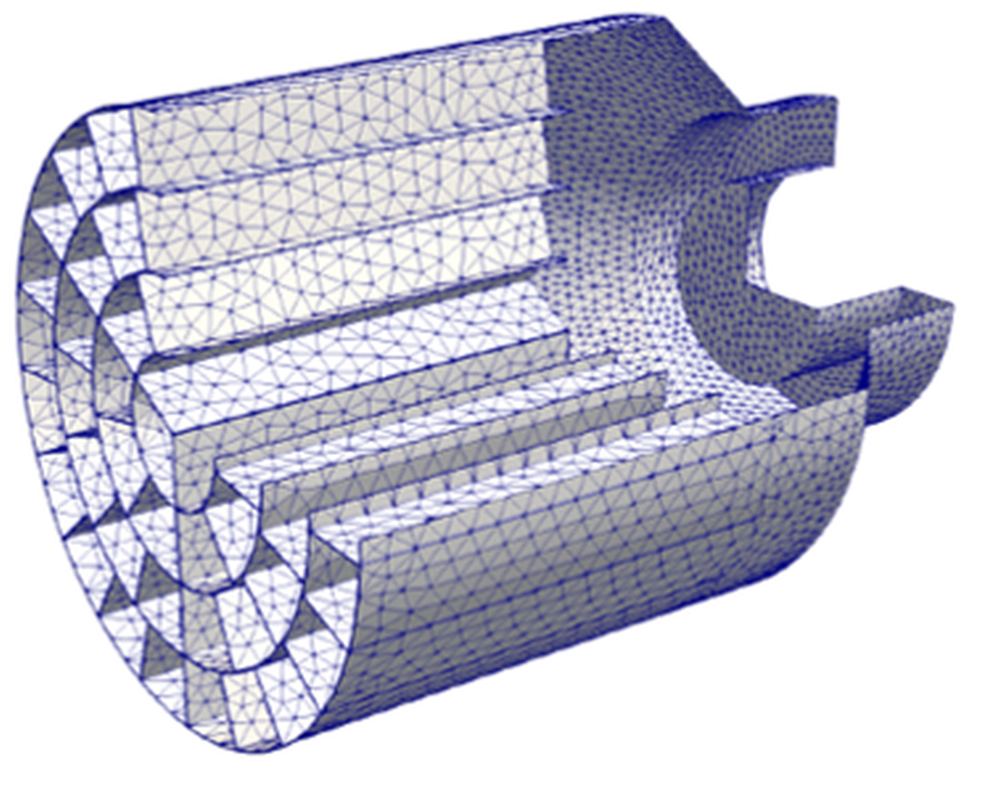
The benefits of VLEO extend from the obvious, like higher-resolution Earth Observation (EO), to the less obvious, like better debris avoidance. But better EO isn’t just about science and data, there’s also a humanitarian aspect to it. The authors write that “However, demand for higher resolution and more timely imagery is needed to enable a more rapid and precise response <to disasters>. Future VLEO satellite systems may be able to address this demand by supporting improved humanitarian assistance and crisis management.”
But the problems of atmospheric drag, atomic oxygen erosion, and others, still need solutions. If the past predicts the future, then it seems likely that solutions to these problems will arrive in the future. Once they do, Earth observation, GPS accuracy, and all the other benefits of VLEO will come to be.

